Buying the best cable modem is a way to keep more money in your wallet and less flowing out to your internet provider. Buy a modem and you put an end to the rental fees your ISP is likely charging you for that modem it set you up with.
Oh, you thought that modem was free? Check your monthly bill. There’s likely an extra fee on top of your regular month rate — as much as $14 a month with some ISPs — that covers the cost of you using your ISP’s mode,.
The best cable modems, in contrast, can be had for $50 to $60 these days. That’s a one-time expense, and with your own modem in place, you can banish the ISP-supplied modem and the monthly fee that comes with it. After six months of owning your modem, the purchase will have paid for itself in the savings on your internet bill.
But which modem should you get? Truth be told, there’s not much separating the best cable modems from one another. The trick is to find one that’s easy to hook up, offers a generous warranty and — most important of all — works with your internet service. We’ve tested many different modems, and these are our favorites.
What is the best cable modem?
For most people, the best cable modem is the Motorola MB7420. It works with a wide variety of internet providers, including Comcast, Spectrum and Cox, and it delivers speeds that will serve the greatest number of people (anyone whose internet plan tops out at 300 Mbps). Its two-year warranty is twice as long as the warranty for the Netgear CM500, which also performed reliably in our tests. Since the CM500 usually costs less than the MB7420, it’s a worthy alternative for bargain hunters.
If your internet service features speeds topping 300 Mbps, look to Netgear’s CM600, which is more dependable than its high-speed rivals.
The best cable modems you can buy right now
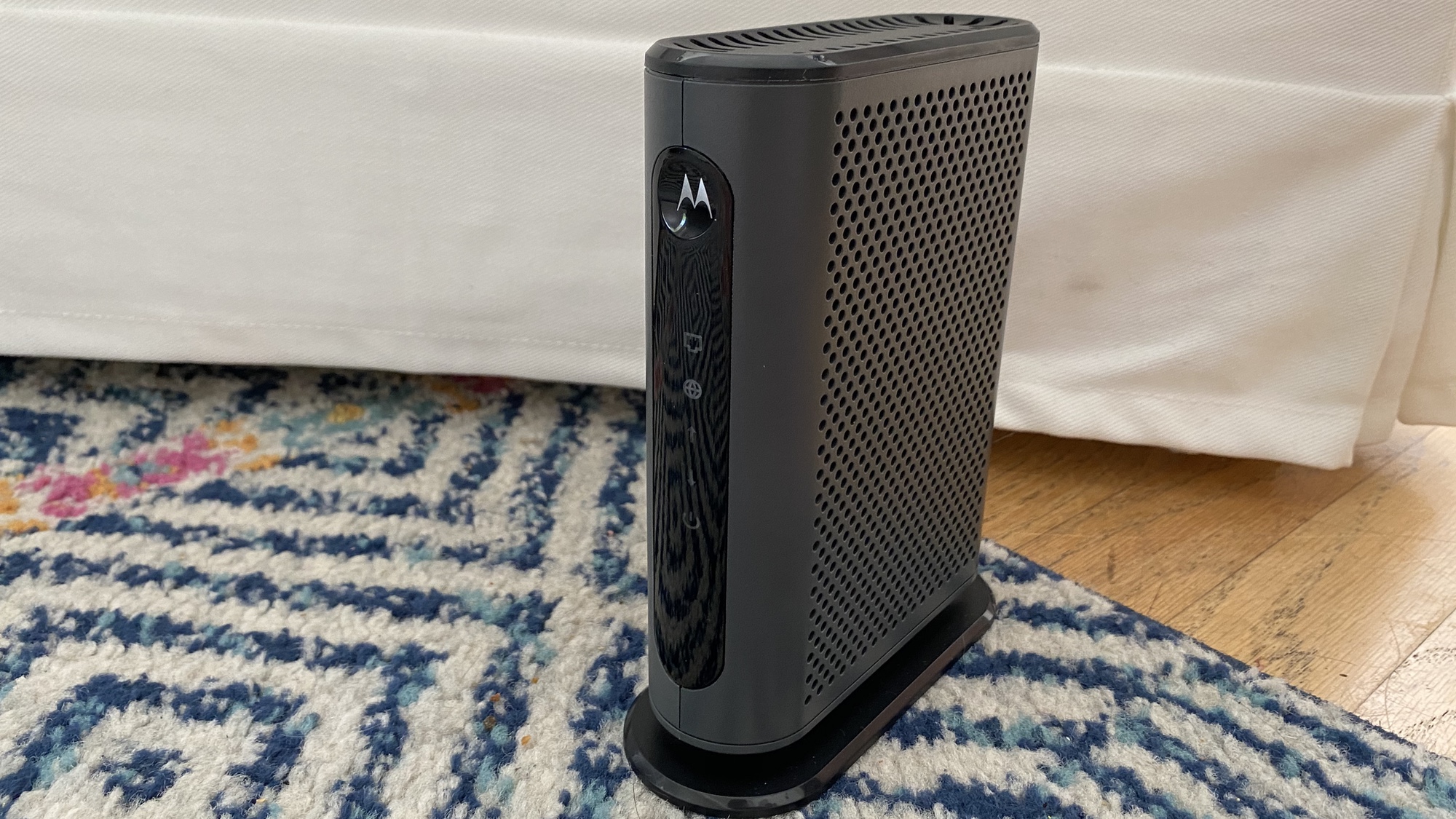

The Motorola MB7420 is the best cable modem for most homes, capable of supporting speeds available to a majority of home internet plans. The MB7420 is ideal for internet plans that top out at 300 Mbps, which covers a wide swath of our household. In testing the MB7420 at my home, I enjoyed steady connectivity, and that’s with multiple people stuck inside, all trying to hit the internet at once. In fact, I’ve been using the MB7402 as my modem for a while now, without any problems or complaints.
The MB7420 isn’t as tall as the Netgear CM500, our previous pick for the best cable modem, though some people may prefer the more compact size of the Arris Surfboard modems. At least, the MB7420 looks stylish, with rounded corners and vented sides. Its gray color should blend in well with other networking equipment.
The blue and green lights on the MB7420 are bright enough to read at a distance without turning a dark room into a laser light show at night. I also found the modem easy to set up with a coaxial connector sticking out of the modem’s backside at a comfortable distance from its lone ethernet port.
There’s not much separating the Motorola MB7420 from the Netgear CM500 as both performed dependably when we tested each modem. But the edge goes to Motorola because it offers a two-year warranty to Netgear’s one-year of coverage. That means better protection for your investment, as the best cable modems tend to last for several yeas. The MB7420 can sometime drop out of stock at retailers, but it’s frequently available from Amazon (opens in new tab), Best Buy (opens in new tab), B&H Photo (opens in new tab) and Target (opens in new tab), where the price hovers around $60.
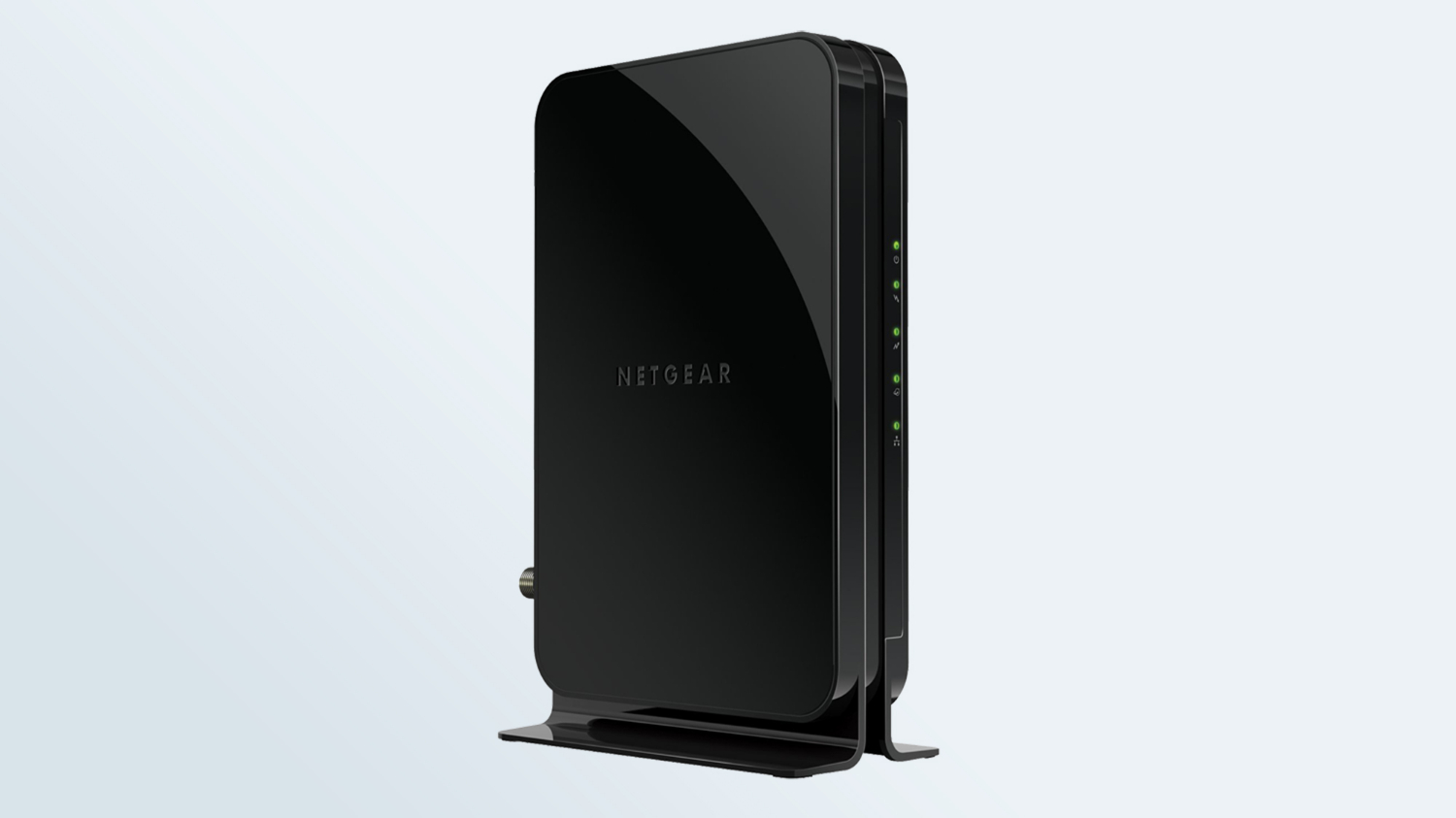
The Netgear CM500 remains one of the best cable modems available, because it’s easy to find at most retailers; you can also find it for a little less than the Motorola MB7420 most of the time, making it a good value. Anytime you can find a new CM500 for $50 or less, that’s a good buy.
The Netgear CM500 works with the biggest cable providers and supports speeds of up to 300 Mbps, which should be enough for the vast majority of Internet users out there. (If you’ve got a high-speed plan, look for a faster modem.)
There’s actually very little performance difference among the best cable modems in our testing, so it’s seemingly slight distinctions that separate these devices. Opt for Netgear’s CM500, and you’ll get a modem that’s just as capable as the Motorola MB7420 or the Arris SB6183. However, Netgear only offers a one-year warranty, compared with two years for those rival modems.
Netgear’s 16 x 4 modem enjoys wide compatibility with internet-service providers, and its design makes setup a breeze. At 7.3 inches, the CM500 is a little taller than the SB6183, and I found its indicator lights difficult to see, although at night, you may appreciate the lack of a light show.
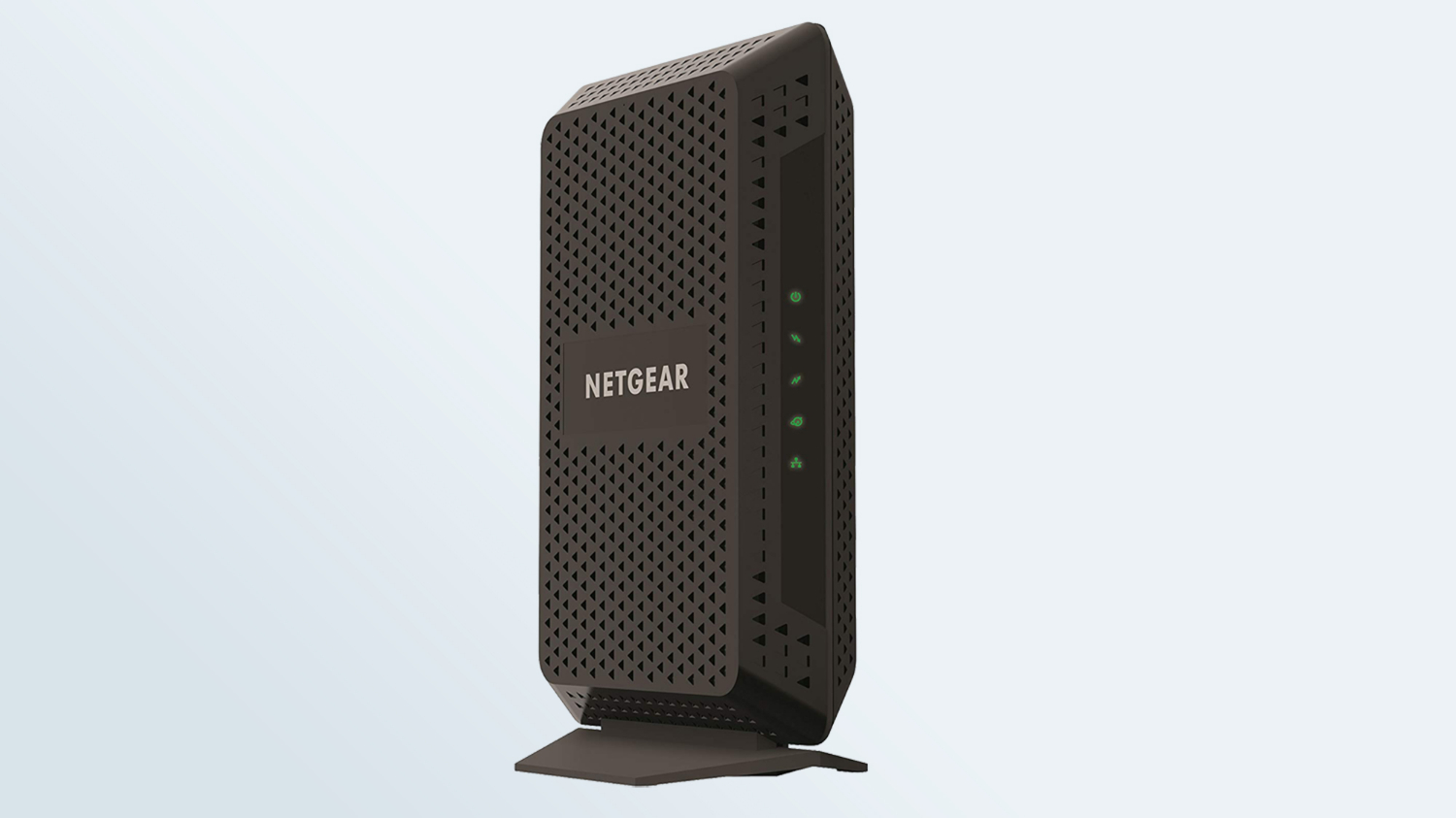
While most homes opt for internet plans that promise speeds of around 100 to 300 Mbps, some people prefer higher-speed service. If your plan promises download speeds that top 300 Mbps, you’ll want a cable modem that can take advantage of that greater performance. Netgear’s CM600 is the best cable modem for those higher speeds, though you’ll pay a little bit more than you would for the CM500.
Netgear’s modem doesn’t use the Intel Puma 6 chipset that’s been blamed for latency issues with some other high-speed modems, such as the Arris Surfboard SB6190. (There’s a firmware update that resolves this issue, though ISPs roll out such updates on their own schedule.) Because of that, you can expect reliable performance from the Netgear CM600 without the lags reported by users with Puma-6-powered modems.
The CM600 is a little on the tall side, but it’s got a funky futuristic look. Like other Netgear modems, it has a one-year warranty. With supplies limited at the moment, some retailers are charging more than $100 for the CM600 — try to avoid paying more than $80 for this modem, though.
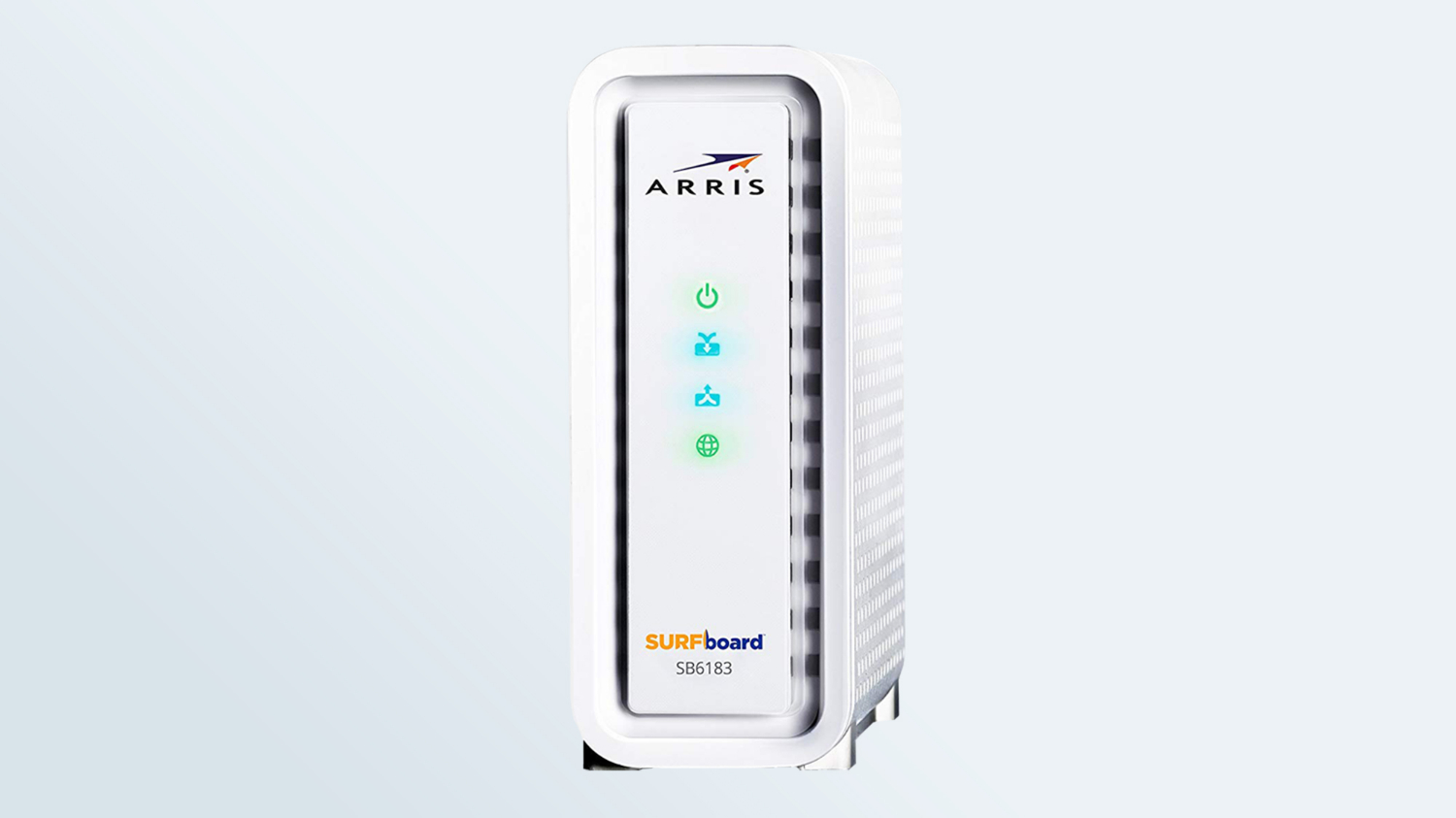
The Arris Surfboard SB6183 was once our pick for the best cable modem thanks to its solid performance that will satisfy most home internet customers who don’t pay for high-speed service, though this older modem is harder to find these days, though we’ve seen it in stock at several retailers. If you can track down the SB6183 at a competitive price, its two-year warranty remains a big plus.
At 5.2 x 5 x 2.1 inches, the all-white SB6183 can be tucked unobtrusively next to a router, cable box and whatever other hardware you have on hand. The coaxial-cable connector is a little too close to the power connector for my taste, but you’re likely to have to deal with that only when setting up the modem.
The SB6183 favors a simple row of vertical indicator lights that are easy enough to spot, though the yellow lighting can be a little hard to see if your modem’s in direct sunlight. Still, it’s pretty easy to glance at the SB6183 to see if there’s any issue with your internet connectivity.
How to choose the best cable modem for you
We focus on DOCSIS 3.0 modems, though you’ll also find DOCSIS 3.1 modems rolling out that are capable of delivering speeds that top 1Gbps; if you’re receiving DOCSiS 3.1 service, look for a device that can take advantage of those faster speeds. If you don’t get speeds greater than 1 Gbps with your internet service, you can still go with a DOCSIS 3.0 device like the ones reviewed above.
We haven’t tested DOCSIS 3.1 modems yet, but we can point to a few models with strong word of mouth. Netgear’s CM1000 (opens in new tab) is backward-compatible with DOCSIS 3.0 for internet users who want to upgrade early. The modem has been certified by Comcast for use with its internet service. Arris bills the Surfboard SB8200 (opens in new tab) as a future-facing modem, capable of handling streaming ultra HD and high-performance gaming with its 32 download and eight upload channels. Motorola’s MB8600 modem (opens in new tab) also has 32 download and eight upload channels with Active Queue Management for speeding up page loads and gaming.
DOCSIS 3.1 modems are more expensive than the DOCSIS 3.0 devices, though we’ve started to see some price drops. Typically priced around $180, you may be able to find a good DOCSIS 3.1 modem for less; as of this writing, DOCSIS 3.1 modem prices range between $140 and $150 depending on available discounts.
As for DOCSIS 3.0 devices, here’s what to consider so that you can choose the right modem:
• Compatibility: Confirm with your ISP that the modem you’re looking at will work with the service you’re paying for. Most DOCSIS 3.0-certified modems should work with DOCSIS-based internet service, but it always helps to confirm. Among the top ISPs, Comcast (opens in new tab), Cox (opens in new tab) and Spectrum (opens in new tab) all offer sites for checking cable compatibility.
• Price and Warranty: You don’t necessarily need to get the cheapest modem, but you should consider devices that pay for themselves within a year with what you save in rental fees. A year-long warranty is the bare minimum you should accept; two years of coverage is even better. As for price, make sure to do some comparison shopping before you buy. Retailers often offer deals on modems, so you could find the model you want — or a reasonable alternative — at a lower price than you’d normally expect.
Monthly cable rental fee by internet provider
- Comcast: $14
- Spectrum: Included with service
- Cox: $7-$10
- Frontier: $10
- Suddenlink: $10
- Sparklight: $8
- Wow: $14
- Mediacomm: $11.50
A 16 x 4 cable modem delivers enough speed to effectively serve the majority of cable customers. That kind of modem typically costs $70 or less, and if you keep an eye out for deals, you might be able to find a top-rated modem for $50 to $60. Modems that support the emerging DOCSIS 3.1 standard start typically cost $180, though sales may let you get these modems for less.
| DOCSIS 3.0 modem type | Maximum download speed | Compatible service tier (Cox, Spectrum, Xfiinity) |
| 16 x 4 | Up to 300 Mbps | Cox Internet Preferred 150, Spectrum Internet, Xfinity Performance Pro+ |
| 24 x 8 | Up to 600 Mbps | Cox Internet Ultimate 500, Spectrum Internet Ultra, Xfinity Extreme Pro+ |
| 32 x 8 | Up to 900 Mbps | Cox Gigablast, Spectrum Internet, Gig, Xfinity Extreme Pro+ |
• Design: There’s not much to differentiate the features on cable modems, which generally sport the same set of indicator lights. You’ll want one with easy-to-spot lights, though if they’re too bright, they can really light up a room at night.. Also, consider the size of a modem, since a compact design blends in more easily with your other networking equipment.
• Speed: A 16 x 4 modem (that’s 16 download channels and four upload ones) should do the trick for homes receiving service capped at 300 Mbps. Any faster, and you should go with a 24 x 8 or 32 x 8 modem, or a DOCSIS 3.1-compatible model if your ISP has upgraded to the new standard.
• Security: When shopping for a cable modem, check to make sure that the model you’re considering isn’t vulnerable to the Cable Hunt software flaw found in the Broadcom chipsets that power many popular modems. If your modem is vulnerable, make sure a software patch is available from your ISP.
Note that the modems we’ve reviewed just provide internet connectivity. If you also get your phone service bundled with your internet, that requires an eMTA or telephony modem — an entirely different type of device.
Best cable modem vs. best router
These days, makers of home networking gear seem to favor modem-router combinations over standalone cable modems. It may be tempting to buy one of these hybrid networking devices instead of a separate modem and router, as you can take care of two tasks with one device. We’d advise against modem-router combos, though.
First, some background: as our modem-vs.-router comparison explains, the two devices serve very different purposes. A cable modem brings internet connectivity into your home while the best routers distribute that internet connection wirelessly, so that all your devices — laptops, phones, and smart-home gadgets — can hop on the internet. If you’re dissatisfied with the reach of your network, it’s a router, not a modem, that you should be in the market for.
So why keep the two networking devices separate? If any part of a hybrid device fails, you’re out both a modem and a router. It’s also easier to upgrade individual networking devices, as routers add support for new networking features at a more rapid pace. Modems evolve more slowly, as you can see from the number of older models still available.
How we test the best cable modems
We test each cable modem on Comcast’s Performance Pro home internet service. After running speed tests to make sure the modems are delivering their promised download speeds, we use the modems as part of regular networking setup to gauge dependability.
We hook up each modem we review in our reviewer’s home, using it as part of our networking setup. That allows us to verify a modem’s compatibility as well as to get a sense of its dependability. Since price is also an important consideration when modem shopping, we also monitor retail sites for the best deals on the modems we’ve tested.
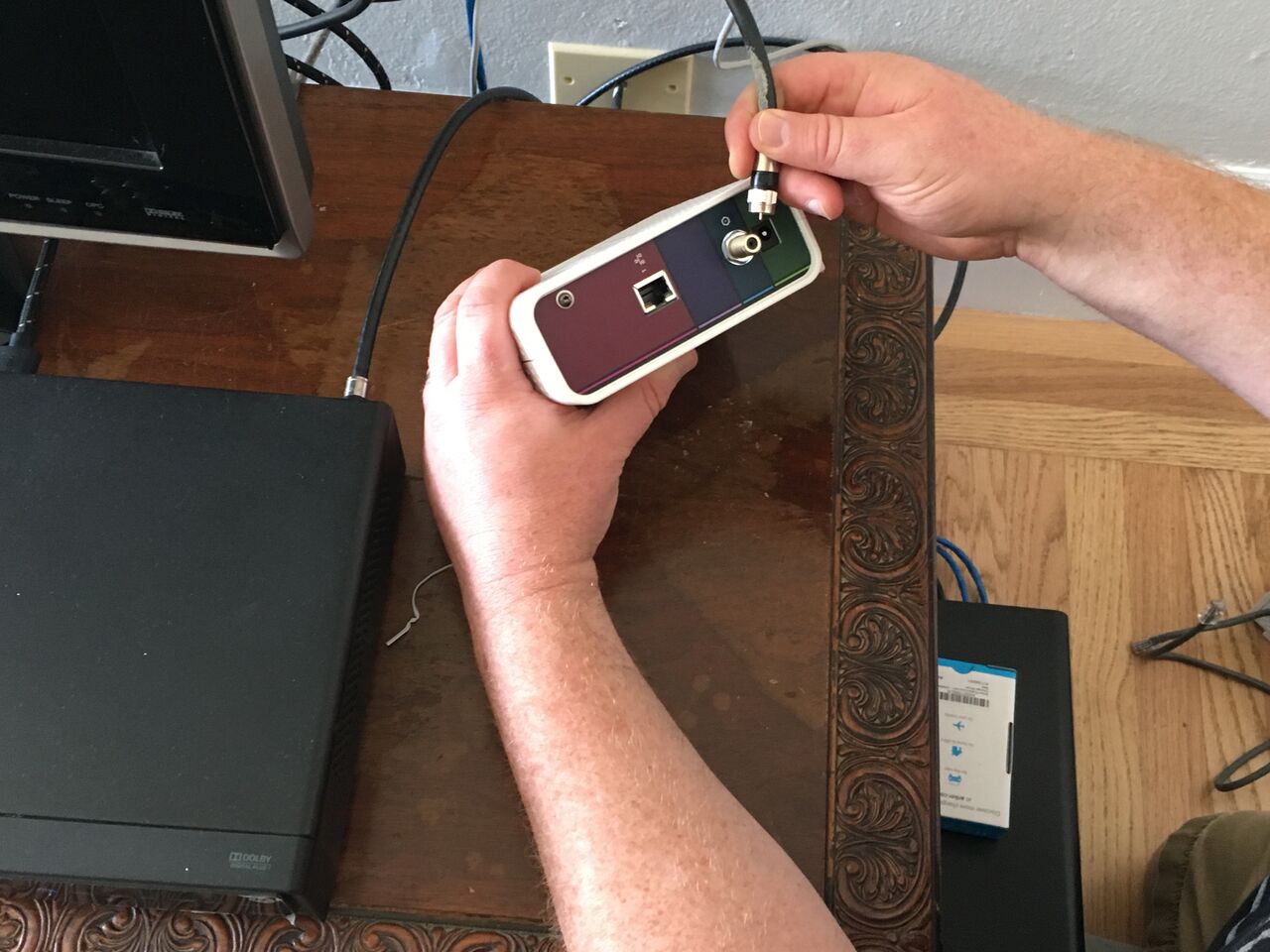
In addition to using the modems in a home with multiple connected laptops, smartphones and tablets, we also evaluate the indicator lights on each modem to see that they’re visible. We look at how easy the modems are to set up. And because the primary reason to get your own cable modem is to save on monthly rental fees for ISP-supplied modems, we heavily weight the length of a modem’s warranty.
Stay connected with us on social media platform for instant update click here to join our Twitter, & Facebook
We are now on Telegram. Click here to join our channel (@TechiUpdate) and stay updated with the latest Technology headlines.
For all the latest Technology News Click Here
